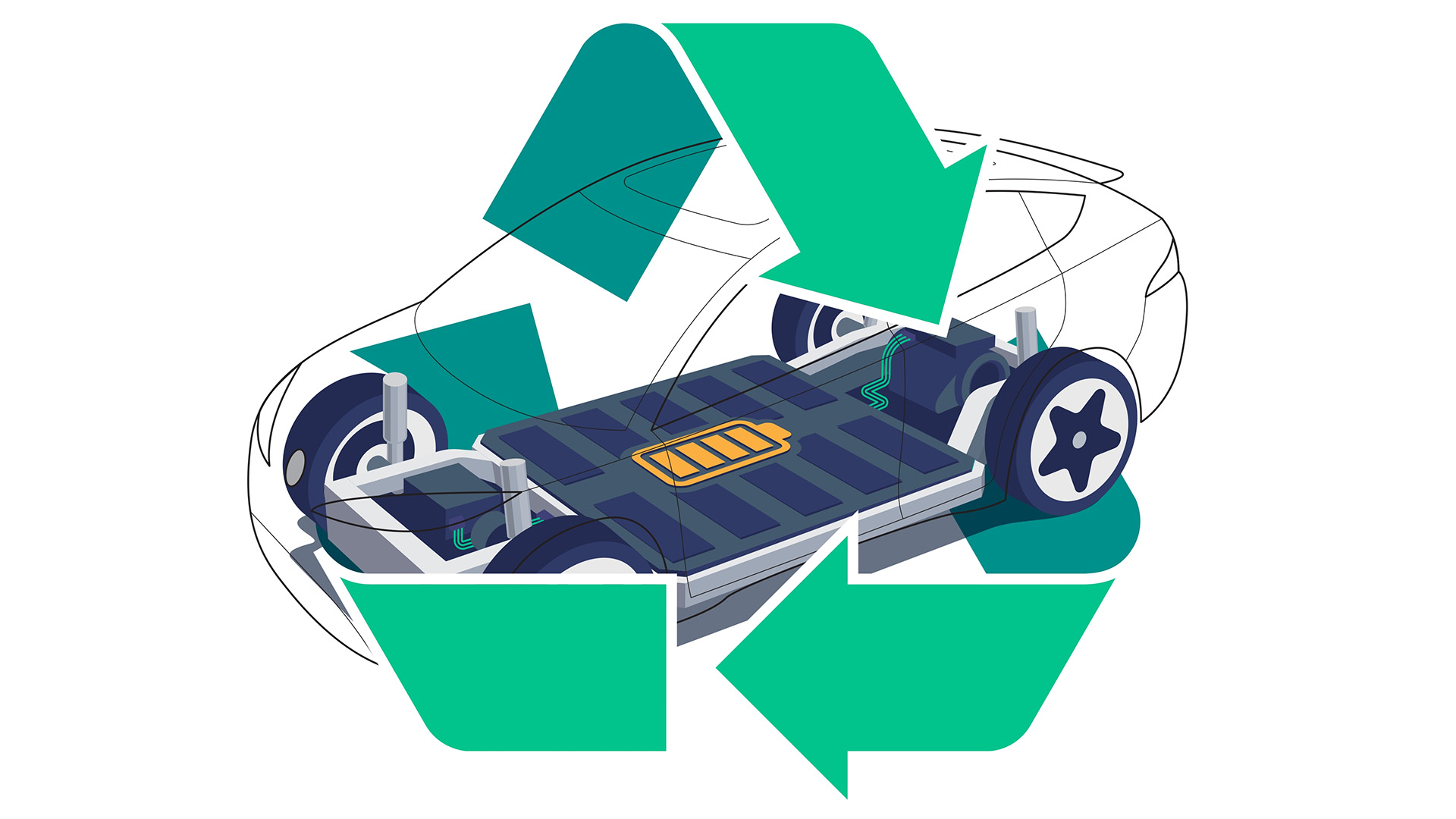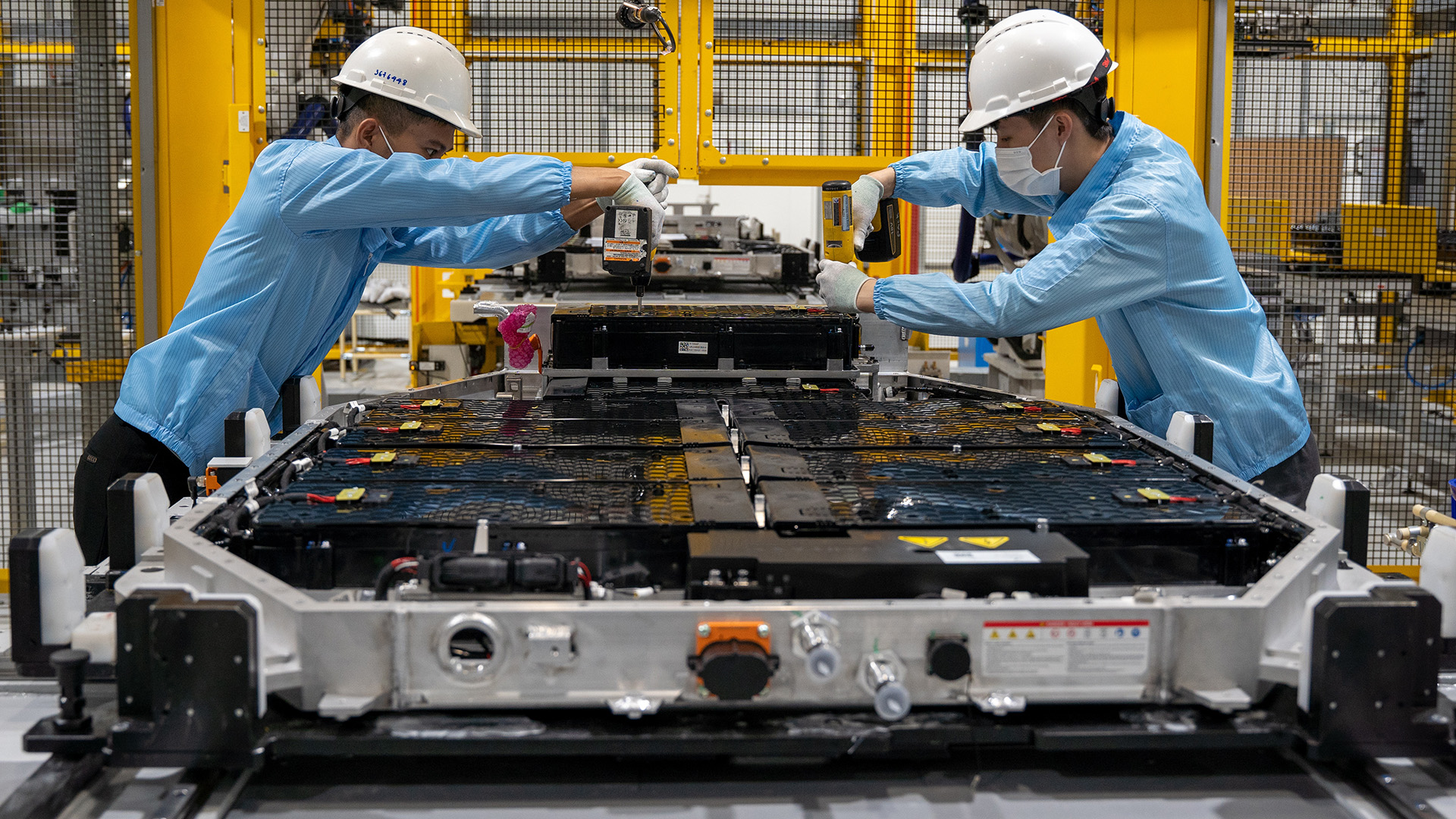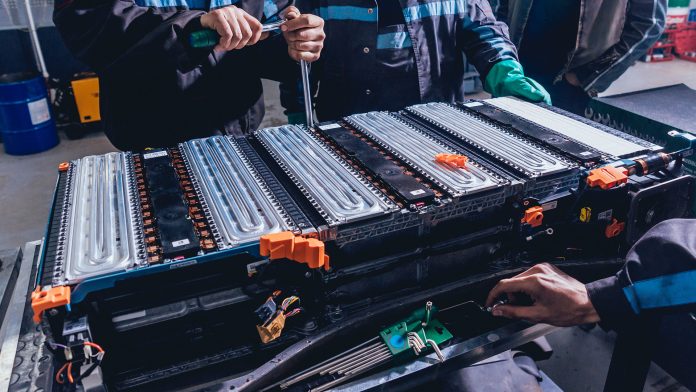The rise of electric vehicles (EVs) brings an environmental challenge – handling a surging number of retired EV batteries.
Therefore, the urgent need for robust regulatory solutions to address EV battery recycling is essential. This article explores this issue within the context of carbon trading mechanisms and dual-recycle channels.
It examines how different regulatory frameworks influence recycling rates, social welfare, and CO2 emissions, scrutinising variables such as carbon trading prices on supply chain operations and probes into their potential impact.
In addition, it investigates the role of EV manufacturers and retailers in recycling efforts and contemplates whether successful recycling schemes from other sectors could be applied to tackle this growing concern.
Current emission levels
Despite the rapid increase in electric vehicle adoption, a key challenge remains in managing the high carbon emissions levels from the transport sector.
The introduction of EVs has been widely seen as an effective way to reduce greenhouse gas emissions from the transport sector.
However, the subsequent issue of dealing with their spent batteries, often referred to as scrap tide, is becoming increasingly severe due to their relatively short service life of 5-8 years.
Technological advancements in EV battery recycling are expected to play a significant role in managing this issue.
As society transitions towards sustainable transportation modes, innovative technologies and techniques are required to improve recycling rates and efficiency.
For example, new processes can potentially recover more valuable materials from spent batteries while minimising energy usage and waste production.
Furthermore, closed-loop supply chain operations – where used products are collected after use and reintegrated into production processes – may provide an effective approach for handling retired EV batteries.
The role of government policies cannot be overstated in promoting sustainable transportation and responsible EV battery recycling practices.
Regulatory frameworks need reinforcement to ensure that manufacturers shoulder responsibility for electronic waste under extended producer responsibilities rules. For instance, in China, a programme was established requiring EV manufacturers to assume responsibility for retired battery recycling.
Likewise, other countries could adopt similar measures or adapt successful examples like deposit-refund schemes applied successfully elsewhere on lead-acid batteries.
Addressing the economic implications of EV battery recycling is crucial both domestically and internationally.

Efficient management of spent batteries can result not only in environmental benefits but also economic ones by providing strategic resources through recycling efforts rather than extracting virgin materials at higher costs—this includes rare earth elements essential for many modern technologies such as smartphones and renewable energy systems.
Moreover, international collaboration should be encouraged for effective EV battery recycling. To this end, sharing best practices, harmonising standards and regulations, and fostering knowledge exchange among countries can ensure that the transition to EVs does not result in new environmental problems but rather contributes to a sustainable future for all.
Effectively managing scrap tide
The looming onslaught of discarded power batteries from expired service life poses substantial environmental and public safety threats, thereby necessitating innovative strategies for effective recycling.
A robust recycling infrastructure is instrumental in mitigating the adverse effects of spent EV batteries. This infrastructure should encompass efficient collection systems, state-of-the-art processing facilities, and waste management protocols to ensure EV batteries’ safe disposal or repurposing.
Furthermore, it’s crucial to factor in that the design and implementation of such comprehensive systems require intricate planning, significant investment and cross-sector collaboration.
Technological advancements play a pivotal role in enhancing the feasibility and effectiveness of recycling initiatives. Innovations in battery design might extend their lifespan or make them more amenable to reuse or recycling.
Likewise, breakthroughs in processing technologies could enhance recovery rates for valuable materials contained within EV batteries or diminish harmful emissions during the extraction process.
Moreover, digital technologies like blockchain might improve traceability across supply chains, which can facilitate producer responsibility schemes by making it easier to track battery lifecycles.
The economic implications of EV battery recycling are manifold. On the one hand, responsible handling of retired batteries involves substantial costs related to collection logistics, processing operations and compliance with environmental regulations.
However, on the flip side, successful recycling endeavours could yield considerable economic benefits by reintroducing valuable materials back into production cycles, thus reducing reliance on primary resource extraction.
Additionally, these activities could stimulate job creation within green sectors whilst potentially opening new markets centred around recycled battery components.
Stakeholder involvement is critical for steering sustainable transitions within transport sectors towards electric mobility while minimising negative impacts associated with battery end-of-life handling.
Government entities need to enforce stringent regulations encouraging manufacturers’ accountability for their products throughout their lifecycle, including post-consumer phases.
Industry players must commit to eco-design principles and invest in research towards environmentally-friendly alternatives, whilst consumers should be incentivised through deposit-refund schemes or similar mechanisms promoting responsible disposal behaviour.
Lastly but crucially, the environmental benefits of these collective actions should not be underestimated. Effective recycling strategies can prevent harmful substances from polluting ecosystems, conserve natural resources and significantly contribute to carbon neutrality aspirations.
Environmental impact of EV batteries
The exploitation of spent EV batteries without proper recycling processes poses significant environmental consequences, potentially counteracting the ecological benefits of transitioning towards renewable sources of energy.
The longevity and long-term sustainability of electric vehicles are marred by the harmful effects associated with improper waste management of their batteries.
These include emissions of hazardous gases when batteries are damaged, overheated, or degrading, as well as contamination from toxic substances contained in batteries that threaten public safety and cause irreversible damage to the environment.
Applying a circular economy approach to EV battery recycling is critical in mitigating these risks. This model promotes resource conservation through efficient use and reuse, thus reducing the need for new raw materials extraction and minimising waste generation.
It encourages an integrated value chain where manufacturers not only design products for longevity but also consider end-of-life product management. In this light, retired EV batteries can be viewed not as waste but as valuable resources that could feed into production cycles again.

This perspective aligns with principles underpinning environmental regulations that aim to safeguard ecosystem health while promoting economic prosperity.
Regulatory frameworks should, therefore, prioritise comprehensive strategies for EV battery recycling, including establishing reliable collection systems and enforcing producer responsibility for end-of-life battery management.
Such measures would alleviate environmental burdens associated with spent EV batteries during the transition towards electric mobility.
Transforming this vision into reality necessitates collaboration between various stakeholders, including manufacturers, policymakers, researchers and consumers, who play a crucial role in ensuring responsible use and disposal practices.
By fostering synergy between effective regulatory policies such as deposit-refund schemes or reward-penalty mechanisms, technological advancements enhancing battery lifecycle performance, and societal awareness about responsible consumption habits, we can work towards an environmentally sustainable future characterised by reduced carbon emissions while also ensuring efficiency in resource utilisation within dual-recycle channels for EV battery recycling.
Importance of regulatory frameworks
Addressing the critical issue of spent EV batteries requires robust regulatory frameworks that incentivise responsible disposal and recycling practices. It is essential to ensure policy effectiveness in reducing environmental burdens from discarded batteries during the transition to electric vehicles.
For instance, China mandated EV manufacturers as primarily accountable parties for retired battery recycling under extended producer responsibilities. This programme emphasises stakeholder responsibilities in ensuring sustainable electronic waste management.
Similarly, the European Union proposed a reward-penalty scheme based on the Batteries Directive 2006/66/EC. Under this regulation, regulators set mandatory recycling standards, with manufacturers receiving penalties or rewards according to their compliance.
Economic incentives can also play a vital role in promoting effective battery disposal and recycling systems. Integrating deposit-refund schemes into existing regulations has proven successful in other contexts, such as lead-acid batteries and portable batteries recycling.
These programmes combine taxes on purchasing specific products with subsidies on separate collections of those products, encouraging consumers towards more environmentally friendly behaviour.
Moreover, many countries have integrated carbon trading mechanisms into their environmental policies as an economic incentive for businesses to reduce emissions.
International cooperation is paramount for advancing these regulatory initiatives across borders, given the global nature of climate change challenges.
Sharing best practices among nations can help optimise policies’ efficiency and impact while adapting them to different socioeconomic contexts.
Enforcement mechanisms are equally crucial for ensuring sustained adherence by all stakeholders involved: manufacturers, retailers, consumers, and recyclers alike.
The applicability of various policy interventions tailored towards EV battery recycling within dual-recycle channels needs further exploration through comparative analysis under diverse scenarios like no intervention versus reward-penalty scheme versus deposit-refund scheme versus a combination approach of both schemes alongside carbon trading mechanisms.
This approach will provide a comprehensive understanding of the effects and interactions among these regulatory frameworks and their potential to drive sustainable EV battery recycling practices worldwide.
The impact of specific parameters like regulatory intensities on social welfare and other components also requires thorough examination for effective policy design.
Carbon trading mechanisms
In response to climate change concerns, several nations have adopted carbon trading mechanisms as an external policy instrument that influences production operations and emission controls in various industries.
This mechanism offers a market-based approach to controlling pollution by providing economic incentives for achieving reductions in the emissions of pollutants.
The concept of carbon credits operates on the fundamental principle that every company has a role to play in reducing global greenhouse gas emissions.
Therefore, companies are allocated allowances for how much they can emit; if they exceed this allowance, they must buy more credits from those who haven’t used up theirs, thus establishing a carbon credit market.
The adoption of these mechanisms is also observed within the EV industry due to its potential for significant emission reductions. The EV manufacturers need to meet certain emission reduction targets set by regulatory authorities.
If they fail to achieve these targets, they are required to purchase additional allowances or credits from other firms that have exceeded their targets through the carbon credit market. This process incentivises firms with lower emissions and penalises those with higher emissions.
Furthermore, these carbon trading mechanisms encourage companies to invest in carbon offset projects – initiatives designed to reduce future emissions – such as renewable energy projects or reforestation efforts.
These projects not only contribute towards meeting the mandated emission reduction targets but also provide an opportunity for companies to earn additional credits which can be traded in the market.
Increasingly, EV manufacturers are recognising this dual benefit and leveraging it towards their sustainability goals.
It’s noteworthy that while such carbon pricing mechanisms provide substantial incentives for businesses like EV manufacturers to reduce their environmental footprint, there remain challenges regarding their implementation and regulation across different jurisdictions globally.

For instance, inconsistencies in setting appropriate prices for each unit of carbon emitted pose difficulties in ensuring fair competition among businesses operating across borders.
Despite these complexities, acknowledging and addressing climate change through such innovative approaches remains crucial for sustainable development across industries worldwide.
EV battery recycling channels
Initiating the retrieval and reuse of spent power cells necessitates a comprehensive network of collection points, often referred to as ‘recycling channels’, which can significantly contribute towards sustainable resource management.
A well-established recycling infrastructure is integral for facilitating effective collection systems that ensure the safe and efficient transport of retired EV batteries from their usage point to designated recycling facilities.
Such an arrangement not only ensures the containment of potentially hazardous materials within these spent batteries but also allows for their systematic disassembly and subsequent processing.
The integration of advanced recycling technologies into these channels plays a pivotal role in maximising the recovery rates of valuable components from EV batteries while minimising environmental impacts.
This involves processes such as mechanical treatment, hydrometallurgical methods, and pyrometallurgical methods, among others, each with its own advantages and challenges, including:
- Mechanical treatment methods are often cost-effective and relatively environmentally friendly but may not recover all valuable materials;
- Hydrometallurgical methods allow for high recovery rates but involve chemical treatments that need careful handling; and
- Pyrometallurgical methods can handle many battery types but result in higher energy consumption and potential air pollution.
Stakeholder collaboration forms another critical aspect of establishing robust recycling channels. This ranges from government entities formulating conducive policies, manufacturers designing products with end-of-life considerations, retailers supporting take-back programmes, and consumers being aware and responsible about proper disposal practices.
The success of this collaborative effort largely hinges on creating economic incentives for each stakeholder group involved. For instance, subsidies or tax benefits could be provided to manufacturers who design easily recyclable products or engage in take-back programmes.
Consumers could be incentivised through deposit-refund schemes, where they receive a refund upon returning used batteries.
A pragmatic approach would involve adopting a mix-and-match strategy wherein various aspects, such as the type and condition of EV batteries received at collection points, dictate which recycling technology is best suited for processing them.
Additionally, the level of economic incentives provided could be adjusted based on the fluctuating market values of recovered materials and the costs associated with different recycling technologies.
By balancing optimising resource recovery and minimising environmental impact, such an approach can contribute significantly to the sustainable management of spent EV batteries within dual-recycle channels.










